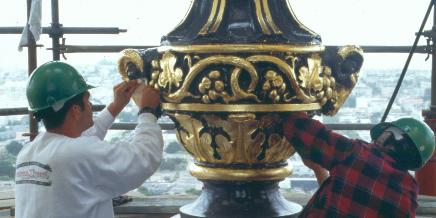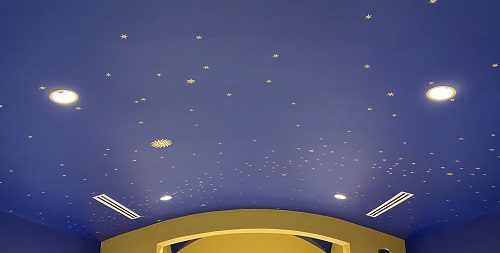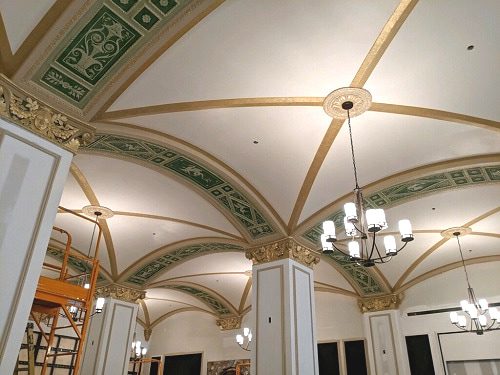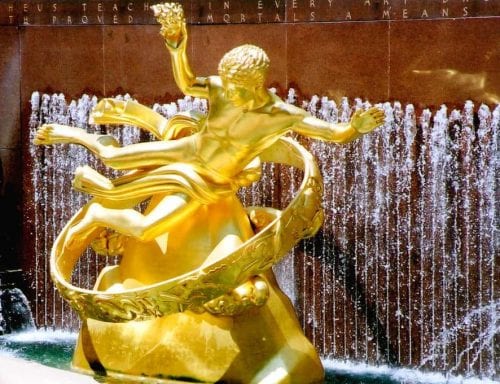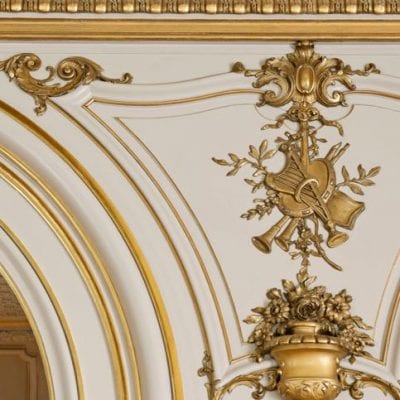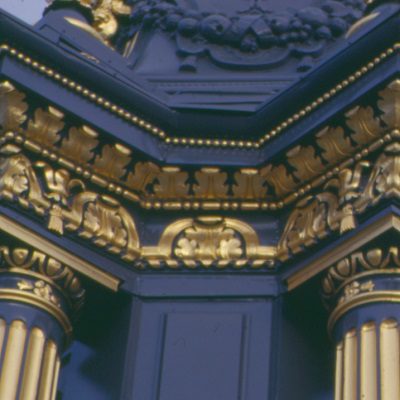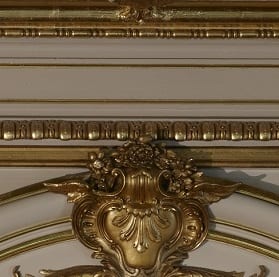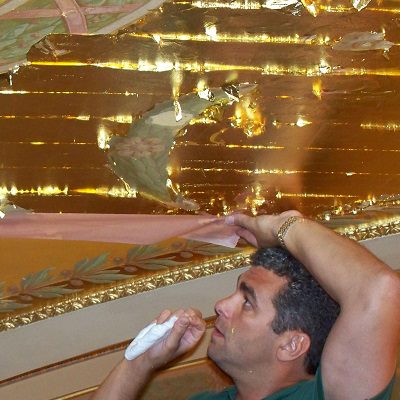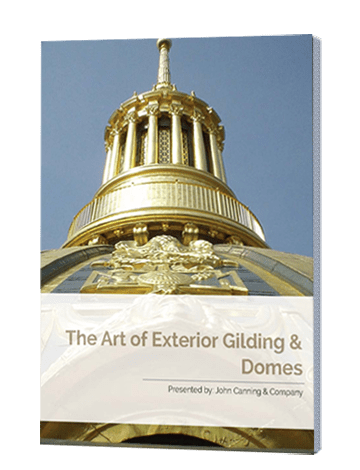Gold Leaf vs Gold Paint For Exterior Projects
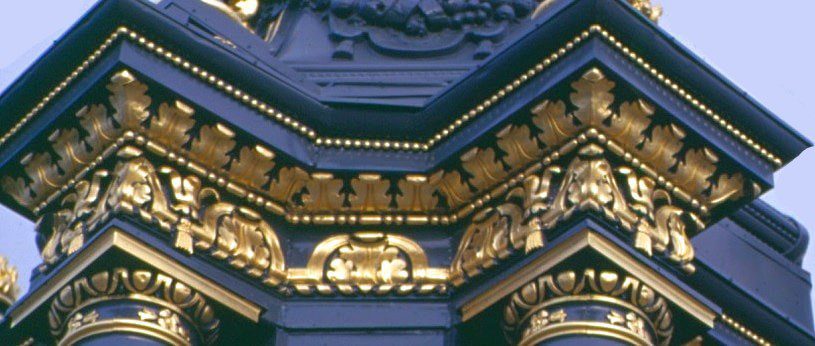
Gold is a rare, rich, and beautiful metal. The durability and beauty of gold is what makes it so desirable, but it's expensive. “Gold” colored paint can be a modest representation of the real thing, but should you use paint when it comes to large-scale, exterior gilding projects?
The benefits of using authentic gold leaf instead of paint are clear. Gold leaf will provide an even more beautiful look that will last longer than paint. Additionally, though initial cost may seem greater in comparison to cheaper “gold” paint works, gold leaf will be less expensive in the long run due to its longer lifespan and resistance to elements such as sunlight and water. For these reasons, it's recommended to choose gold leaf over paint for outdoor gilding projects.
What is Gold Leaf?
In order to understand this claim, you must first understand the nature of real gold leaf.
Gold Leaf – Weight and Gold Content
Gold leaf varies with weight and gold content. Gold content expresses the purity of the leaf and ranges from 6 karat to 24 karat, which is 100% gold. The degree to which the gold is mixed with silver or bronze will determine its karat value. Weight is the other differing factor. Like purity, the heavier the leaf the more durable and resistant it is.
In addition to the purity and weight, there are also other factors that gilding artists must consider when working with gold leaf. Some of these include the type of adhesives used to attach the gold leaf, the preparation and priming of the surface to be gilded, and the types of materials used to protect the gilded area from any kind of reaction or damage.
Since exterior gilding is subject to all kinds of climate and environmental happenings, gilding artists have developed certain guiding principles for exterior gilding projects to ensure success. The purer and heavier the gold, the more durable and lasting it will be. As a general rule, 23kt purity and 21-23 grams per 1,000 leaves in weight should be used for exterior gilding projects. These attributes will maintain the integrity of the gilding project for more than 30 years.
Examples of Exterior Gold Leaf Gilding: San Francisco City Hall, Prometheus Fountain Statue and West Virginia State Capitol.
The 18ft Prometheus Statue is a great example of exterior gold leaf that you can see up close in Rockefeller Center.
What is Gold Paint?
Most “gold” paints are usually, but not always, water-based paints with certain metallic or mica pigments to give the appearance of gold. They provide a water-proof coating which, to some extent, protects the substrate from corrosion, rust, UV exposure, and acid rain up to a point in time. Typically, exterior paints are effective for the first five years while the UV inhibitors in the paint are viable. Around the five-year mark these inhibitors begin to break down. Depending on product and mil-thickness of the paint it will break down rather quickly. Usually within ten years, the “gold” paint is in rapid failure. Because of this, “gold” paint is usually used in indoor projects at higher elevations, or on smaller projects such as picture frames, furniture, paintings, and signs.
Although we won’t go into detail in this article, there is also imitation gold leaf, which offers a lot of the same pros and cons that “gold” paint does.
Examples of Interior Projects that used Gold Paint vs Gold Leaf Gilding for cost saving purposes. Here we see stars were painted in gold on a ceiling of a church and a institution used gold paint for ceiling accents.
Gold Leaf Vs. “Gold” Paint: Best Ways to Use Them In Restoration
The primary benefit of “gold” paint is the fact that it is a fraction of the cost. If a project budget is more of a concern than longevity, “gold” paint could be used as a temporary fix, providing some protection and appeal long enough to raise a proper budget to perform a gilding project. Another appealing factor of “gold” paint is its easy application. Painting does not require the same kind of skill, technique and knowledge necessary for performing gilding properly to last the more than 30 years it is capable of.
Although “gold” paint is useful for certain projects, genuine gold leaf is much better in both appearance and durability, and absolutely necessary for exterior gilding projects. The aesthetic of authentic gold leaf is much more consistent, rich, and brilliant than “gold” colored paint, which can be uneven in its pigment distribution and give subtle appearances of brush strokes. This paint is also not reliable in durability. It will fade, tarnish, and corrode in just a handful of years, whereas genuine gold leaf of a sufficient purity level and proper application will last for many decades. Even the inexpensive nature of “gold” paint does not prove beneficial in the realm of exterior projects since, in the long run, more money would be used to repair the “gold” paint every few years than it would be to perform the work once with authentic gold leaf.


